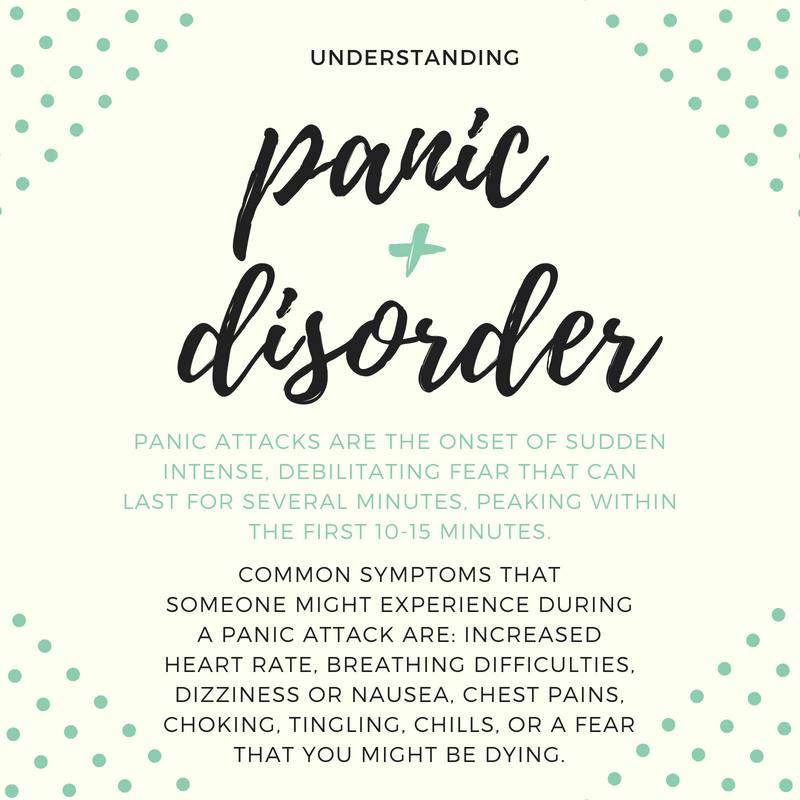
Understanding Panic Disorder
All of us have experienced the feeling of being gripped with a sense of panic to some degree before, whether it is the result of a life- threatening experience or an impromptu presentation. If panic is so commonplace then how could it also be a classifiable disorder? In order to understand and define panic disorder, it is important to first understand panic attacks, which are one of its defining characteristics.
There is a misconception that panic attacks occur as a result of a stressor or environment. The biggest indicator of panic disorder are the uncontrollable, unmanageable panic attacks that come along with them. Panic attacks are the onset of sudden intense, debilitating fear that can last for several minutes, peaking within the first 10-15 minutes. A few common symptoms that someone might experience during a panic attack are: increased heart rate, breathing difficulties, dizziness or nausea, chest pains, choking, tingling, chills, or a fear that you might be dying. Due to these symptoms, many people suffering from panic disorder or panic attacks might frequently visit the hospital, believing that they are having a heart attack or have similar problems. It is also possible that some people have panic attacks caused by pre-existing medical conditions. Panic attacks can also occur as a result of other mental health conditions like agoraphobia, general anxiety disorder, or bipolar disorder. Due to these wide variety of causes, it is very important for people experiencing a lot of anxiety and panic attacks to receive the treatment that they need by talking to a doctor, therapist, or by reaching out for help in other ways.
Panic disorder can be triggered by stressful life events, such as a recent loss. It is also possible that people might have a previous genetic predisposition to anxiety disorders, which might put them at an increased risk to develop a disorder like panic disorder. Research has also
found that women are two times more likely to develop panic disorder than men are. Another anxiety disorder that is very similar to panic disorder is agoraphobia, which is specifically the fearing of going into public spaces caused by an associated fear of having panic attacks in places where you will not be able to get help.
Many people suffering from panic disorder might be embarrassed to ask for help or believe that there is no way to get help, but there are many paths of treatment that can be successful in helping those who are suffering. Panic disorder can be efficiently treated through
either different kinds of therapy or medication directed towards relieving anxiety disorders. About 6 million Americans suffer from panic disorder, while almost twice as many will experience panic disorder in their lifetime. People generally experience an onset in panic
disorder during their teens or young adulthood.
Suffering from a mental disorder can be difficult and debilitating, but there are many possible treatment options. If you or someone you know is struggling with a mental health disorder, feel free to contact Lifeline Connections for help. The sooner you reach out for help,
the sooner you will be able to feel better. You can visit Lifelineconnection.org or call 360.397.8246 for more information.
